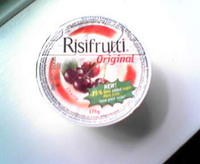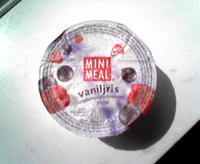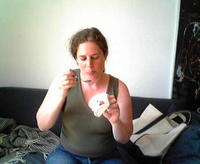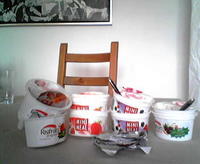

Reason for Study: Rice pudding consumption in a particular household in the greater Copenhagen (Denmark) area is a growing trend, which is complicated by the presence of two competing brands, Risifrutti (RF) and Mini Meal Vaniljris (MM), at a local Fakta supermarket. This study sets out to measure household attitudes towards these two brands, in hopes of adding both qualitatively and quantitatively to a broader scientific understanding of dessert attitude. This study was financially supported by a grant from the Thor Institute for Grocery Enabling Research (TIGER), which funded the experimental material, and the Virum Fakta, which had the Risifrutti on sale (4 units for 20 DKK).
Hypotheses: According to the 'you get what you pay for' principle, it would be expected that RF (7.45 DKK/unit) would score somewhat higher than MM (6.50 DKK/unit).
Method: Four flavours, two of each brand, were tested: RF strawberry, RF cherry, MM strawberry, and MM raspberry/blackcurrant. Because of space limitations, the following statistics are based solely on the two strawberry varieties. Each brand/flavour combination was tested by 2 experienced rice pudding researchers, conveniently located in the same household, and each combination was rated (using a standard 5-point Likert scale, 1=really bad, 2=bad, 3=o.k., 4=good, 5=really good) on the following characteristics: Rice Taste, Rice Texture, Fruit Taste, Overall Taste, Overall Texture.

Results: The results can be seen below. In each case, separate numbers are given for each researcher, as this yielded more meaningful data than averaging.
Rice Taste, RF 4 / 3, MM 2.5 / 3.
Rice Texture, RF 4 / 3, MM 3 / 5.
Fruit Taste, RF 3 / 4, MM 2 / 3.
Overall Taste, RF 4 / 3, MM 3.5 / 4.
Overall Texture, RF 4 / 4, MM 3.5 / 5.
Conclusions: The results clearly show that for both RF and MM, the blend of fruit and rice was perceived as better than the fruit by itself, especially for MM, which was viewed as synthetic tasting. Great individual difference can also be seen for the texture ratings, with a split between those who prefer thinner more 'pudding-like' pudding (such as RF), and those who prefer a thicker, chunkier pudding (such as MM). The original hypothesis, that RF would receive higher ratings, could not be proved with this sample.
Suggestions for further research: This research opens up tantalizing possibilities for expansion, and the field is open for those who have the resources to carry out a larger scale study. With a larger sample, differences based on gender, age, or other factors could also be statistically analyzed. A long-term longitudinal study, following rice pudding preference as related to personal development, could also prove useful.


2 kommentarer:
Hmm...has this been peer-reviewed and published in a recognised journal, such as the Danish Journal of Dessert Studies?
Well, it has been submitted to that journal, as well as some related outlets, but so far with no luck. Dessert Studies tends to be quite traditional, and, as I'm sure you're aware, rice pudding studies are seen as being a bit, well, grainy in terms of the overall field.
Send en kommentar